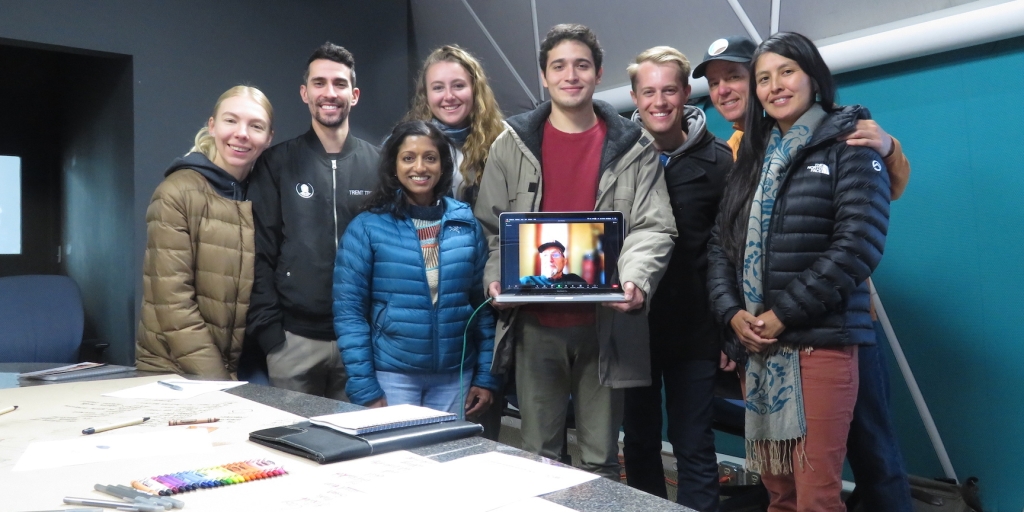
(left to right) Anastasia Stepanova, Trent Tresch, Bindhu Oommen, Luna Powell, Atila Meszaros, Sean Gellenbeck, Kai Staats, and Colleen Cooley with Dr. Gene Giacomelli via the magic box. Jas Purewal of the Analog Astronaut Conference, Dr. Cameron Smith of Pacific Spaceflight, and Meridith Greythorne of the SIMOC team attended remotely.
Members of both the SIMOC and SAM teams met for a three days summit to design and develop the SAM visiting team experience. On Thursday, December 15 co-founder of CHaSE, the Center for Human Space Exploration at the Biosphere 2 Trent Tresch lead team members through the use of pressure suits and a crash course in the history of human space travel.
On Friday, December 16 the team met in the University of Arizona Center for Innovation (UACI) room at Biosphere 2 to develop a core philosophy around how visiting teams will be received and what they will take away from their experience at SAM. This effort was given foundation in an opening “safe space” visualization and discussion lead by Director of Research for SAM Kai Staats, followed by open discussion, ideation, and development of critical components of the SAM experience. Just after lunch the entire team participated in a pressure test of SAM, the first following the completion of the third pressure door by Nathan Schmit that very morning. Ezio Melotti, lead developer of SIMOC gave a demonstration of the latest version of SIMOC Live with real-time carbon dioxide, oxygen, temperature, relative humidity, and VOCs sensors, both Vernier and Adafruit products.
On Saturday, December 17 the team met for a final five hours to discuss the logistics for receiving SAM research teams to the Biosphere 2: training in conflict resolution, use of the SAM facilities, communication protocol and mission control, time in SAM, exit and debrief. The summit was captured in hand written notes and transcribed audio, and will be encoded into a comprehensive user guide for both the SAM team and visitors to this unique research facility in early 2023.
Notes and sketches were principally captured on a single roll of construction paper that stretched the length of the conference table, with pens, markers, and Crayons employed to express thoughts and capture ideas.

